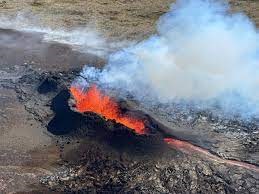Free Courses Sale ends Soon, Get It Now


Free Courses Sale ends Soon, Get It Now



Disclaimer: Copyright infringement not intended.
Context
Details
About Earthquake swarm
What causes swarm sequences?
Fluid movement:
Active volcanism:
Slow-slip instances:
Facts about the Reykjanes peninsula
|
PRACTICE QUESTION Define what is meant by an 'earthquake swarm' in the context of seismology. Explain the factors that can contribute to the occurrence of earthquake swarms. |
© 2024 iasgyan. All right reserved